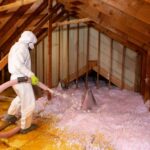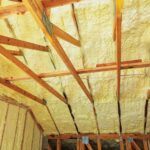When it comes to maintaining your home, one aspect that often gets overlooked is the roof. Yet, it’s one of the most vital parts of your house. If you’re a homeowner, chances are you’ll need to address roof issues at some point. This detailed guide on DIY asphalt shingle repair will provide you with the necessary steps to maintain your roof and ensure its longevity.

Understanding Asphalt Shingles
Asphalt shingles are among the most popular roofing materials due to their affordability and durability. They come in various styles and colors, offering a versatile solution for homeowners. However, like any other roofing material, they are susceptible to wear and tear.
Common Issues with Asphalt Shingles
Before diving into the repair process, it’s essential to identify common problems associated with asphalt shingles. Issues such as curling, cracking, and missing shingles are typical. Understanding these problems will help you determine the best course of action.
Cracked Shingles
Over time, exposure to harsh weather conditions can lead to cracked shingles. Cracks can allow moisture to seep into your roof, leading to further damage.
Curling Shingles
Curling occurs when shingles start to lift at the edges. This can be due to poor installation, inadequate ventilation, or natural aging.
Missing Shingles
Heavy winds and storms can cause shingles to become loose and eventually fall off. Missing shingles need immediate attention to prevent leaks.
Preparing for DIY Asphalt Shingle Repair
Before you start the repair, gather all necessary tools and materials. You’ll need a ladder, a hammer, roofing nails, a pry bar, a utility knife, and replacement shingles. Safety gear like gloves and goggles is also essential.
Additionally, inspect your roof for any signs of damage. An inspection checklist can help ensure you don’t miss any critical areas.
Step-by-Step Guide to Repairing Asphalt Shingles
Step 1: Assess the Damage
Begin by identifying the damaged shingles. Look for cracks, curls, or missing pieces. Make note of how many shingles need replacement.
Step 2: Remove Damaged Shingles
Use a pry bar to gently lift the damaged shingle. Be careful not to damage adjacent shingles. Remove nails and any remaining shingle pieces.
Step 3: Install New Shingles
Cut a new shingle to fit the gap if necessary. Slide it into place, ensuring it aligns with the existing shingles. Secure it with roofing nails.
Step 4: Seal the Shingles
Apply roofing cement under the edges of the new shingle to ensure a waterproof seal. This prevents future water infiltration.
Maintaining Your Roof Post-Repair
Regular maintenance is crucial for prolonging the life of your roof. Simple practices like clearing debris and ensuring proper drainage can prevent future issues. Learn more about post-repair maintenance to keep your roof in top shape.
When to Call a Professional
While DIY repairs can be effective for minor issues, some situations require professional help. Extensive damage, significant leaks, or structural issues are best handled by experienced roofers.
Safety Tips for Roof Repair
Safety should always be your top priority. Use a sturdy ladder, wear appropriate gear, and avoid roof repairs during adverse weather conditions. For more tips, check out these ladder safety tips.

Frequently Asked Questions
Can I repair my roof myself?
Yes, minor repairs can be done by homeowners with the right tools and knowledge. However, for major repairs, it’s best to consult a professional.
How long do asphalt shingles last?
Asphalt shingles typically last 20-30 years, depending on the climate and maintenance.
What are signs of roof damage?
Common signs include leaks, missing shingles, and visible wear. Regular inspections can help catch these issues early.
For more comprehensive information on roof maintenance, visit roofing maintenance tips.
This article contains affiliate links. We may earn a commission at no extra cost to you.







